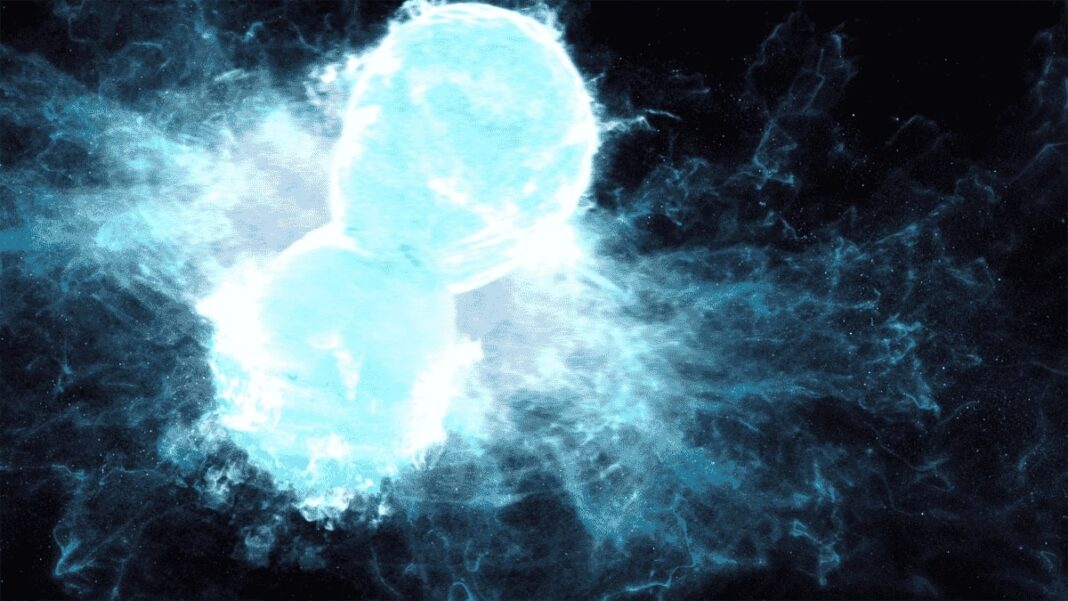UNITED STATES: Astronomers have witnessed an ideal explosion which occurred when two neutron stars fused together, which is known as kilonova. The explosion was enormous and completely spherical in nature.
Astronomers saw the merger of the two neutron stars as they turned into a black hole. This is one of the universe’s most explosive explosions, known as a kilonova. Kilonova occurs when two neutron stars, which are extremely dense objects, merge.
The Very Large Telescope, located in Chile, of the European Southern Observatory, was used to study the kilonova. Astronomers have been astounded by the fast-expanding fireball of brilliant stuff, and the specifics have confounded their assumptions.
The two neutron stars, with a total mass of nearly 2.7 times that of the sun, had been orbiting one another for aeons before they collided, which took billions of years to prepare for.
The two neutron stars were born in a binary system as two enormous regular stars. After exhausting their fuel, each burst and collapsed, leaving behind a tiny, dense core that was roughly 12 miles (20 km) in diameter and had more mass than the sun.
In the final seconds before merging, both were stretched out and pulled apart due to the strength of each other’s gravitational fields.
The two momentarily combined to form a single, very dense neutron star, which then fell to produce a black hole, an object whose gravity is so intense that not even light can escape.
“In a number of respects, it is the ideal explosion. It is stunning in terms of aesthetics, shape simplicity, and physical relevance,” according to lead researcher and astronomer Albert Sneppen of the Copenhagen-based Cosmic Dawn Center and author of the study published in Nature.
The incident took place in the NGC 4993 galaxy, which is 140–150 million light years from Earth and faces the constellation Hydra.
The scientists anticipated the explosion to possibly resemble a flattened disc, a massive, bright cosmic pancake, possibly with a jet of material shooting out of it.
Kilonova explosions were predicted in 1974 and confirmed in 2013, but until this one was discovered in 2017 and thoroughly examined, no one knew what they looked like.
“In terms of aesthetics, the kilonova’s colours almost exactly resemble the colours of the sun, except with a few hundred million times more surface area. The astonishing physics at the core of this merger are physically contained in this spherical explosion,” Sneppen said.
The enigmatic neutrino particle or energy released from the short-lived solitary neutron star’s powerful magnetic field was among the theories put out by the researchers to explain the explosion’s spherical form.
Also Read: NASA Will Test Nuclear Rockets to Send Astronauts to Mars Swiftly



